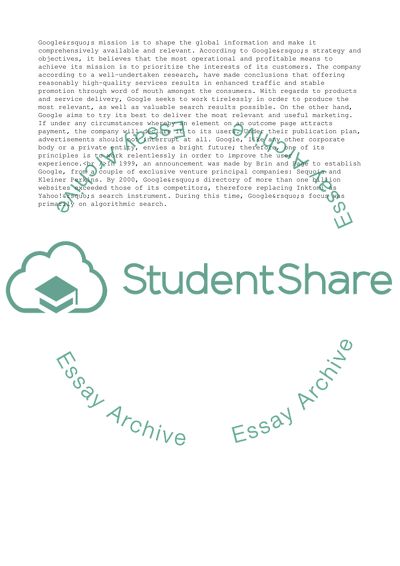Cite this document
(“The Growth of Google Research Paper Example | Topics and Well Written Essays - 3000 words”, n.d.)
The Growth of Google Research Paper Example | Topics and Well Written Essays - 3000 words. Retrieved from https://studentshare.org/business/1671262-google
The Growth of Google Research Paper Example | Topics and Well Written Essays - 3000 words. Retrieved from https://studentshare.org/business/1671262-google
(The Growth of Google Research Paper Example | Topics and Well Written Essays - 3000 Words)
The Growth of Google Research Paper Example | Topics and Well Written Essays - 3000 Words. https://studentshare.org/business/1671262-google.
The Growth of Google Research Paper Example | Topics and Well Written Essays - 3000 Words. https://studentshare.org/business/1671262-google.
“The Growth of Google Research Paper Example | Topics and Well Written Essays - 3000 Words”, n.d. https://studentshare.org/business/1671262-google.


